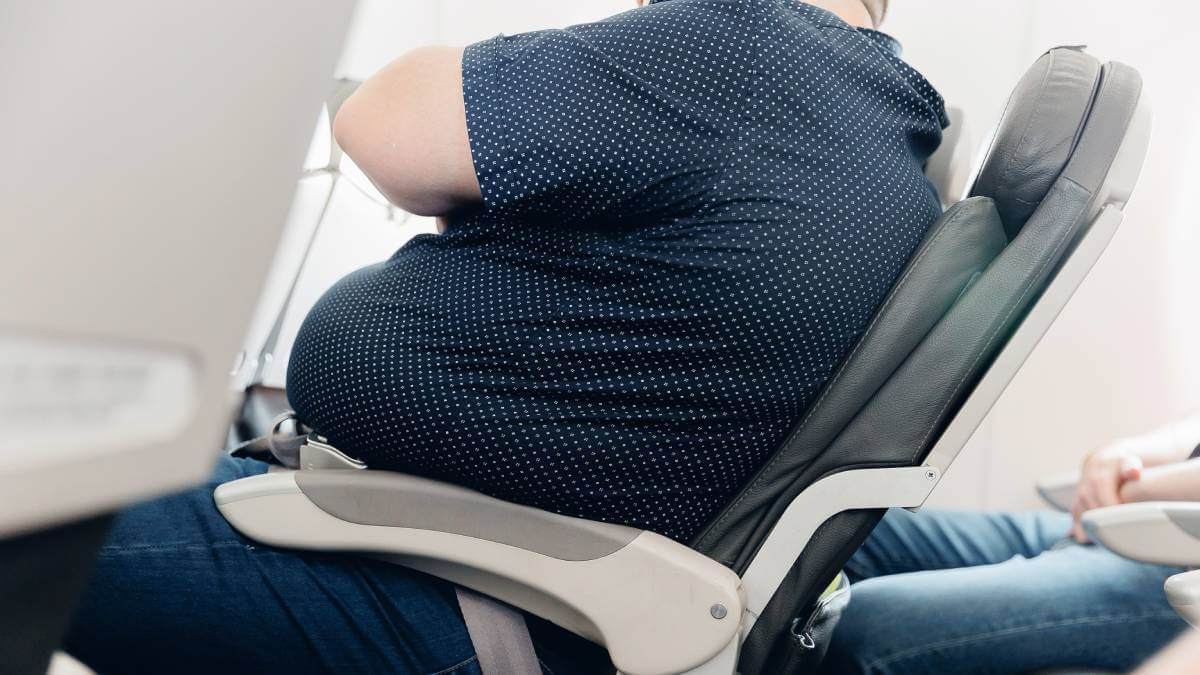On many a flight in the past few years I’ve been sandwiched between Viking-sized men or repeatedly jabbed by passengers who can’t help but have their elbows well beyond the invisible ‘armrest border’.
Recent research unveiled by the University of South Australia reveals that over the past few decades, Australians have been ‘growing’. The researchers found that Australians are padding on an estimated three kilograms every decade.
This revelation has prompted thought on how airlines can manage expanding body sizes and the existing designs of transportation vehicles.
Redesign
Anthropometry, or the study of evaluating body sizes and shapes, provides a vital background to this discussion. Academics from the University of South Australia have produced the first-ever comprehensive data set relating to anthropometry for Australian adults between 18 to 64 years, and it’s started a whole discussion on redesigning and planning of our transport vehicles.
Since the ’60s, developed countries have exhibited a surge in the rate of obesity and weight gain among adults. This trend included children from the ’80s onwards. Australia isn’t immune to this weight gain, with the data showing a probable ongoing rise in weight among adults, scaling from 1.5 to 3.5 kilograms each decade.
For the next 20 years, while stature might remain steady, weight gain is projected to vary from two to three kilograms every 10 years. Broadly speaking, we can anticipate a minimal incremental stature of 10 millimetres per decade partnered with a weight rise of three kilograms every decade.
In other words, people are getting wider and heftier.
Body shapes changing
Research points out that, over the past three decades, deviations in body shapes coupled with unchanging airline seat dimensions have made airline travelling uncomfortable for most men and women. The longstanding reliance on average passenger weight data that goes back to the ’50s doesn’t hold water anymore, with the 21st-century traveller becoming considerably larger.
More than ever, this increasing weight trend burdens aircraft design and fuel efficiency. Greater weight results in higher fuel consumption, leading to spiralling operational costs and amplified environmental concerns.
Put into perspective, United Airlines could annually save US$80 million if every passenger managed to shed around 4.5 kilograms.
As per the research findings, this new dataset stands as ammunition for the transport industry to tackle our growing proportions. The researchers summarise it perfectly, noting that foreseeing the changes in body size over the coming decades is elemental in ensuring that our transport designs remain enjoyable for passengers.
Comfortable travel
This research is seen as a lever for modernising transport systems, on land and in the air, to provide comfortable, safe, human-centred travel for all.
“These designs directly impact passenger comfort, safety, accessibility, and our overall user experience,” says Christina Kirsch, senior human factors specialist at TfNSW. “By weaving in anthropometric data into the design process … we can ensure more efficiency, safety, and comfort for our staff and customers.”
Do you ever feel uncomfortable when you fly? Would you like airline seats to be wider or have more leg room? Which would you prefer? Why not share your thoughts in the comments section below?
Also read: Passengers may soon be weighed


YES x 3, but is it ever going to happen?!